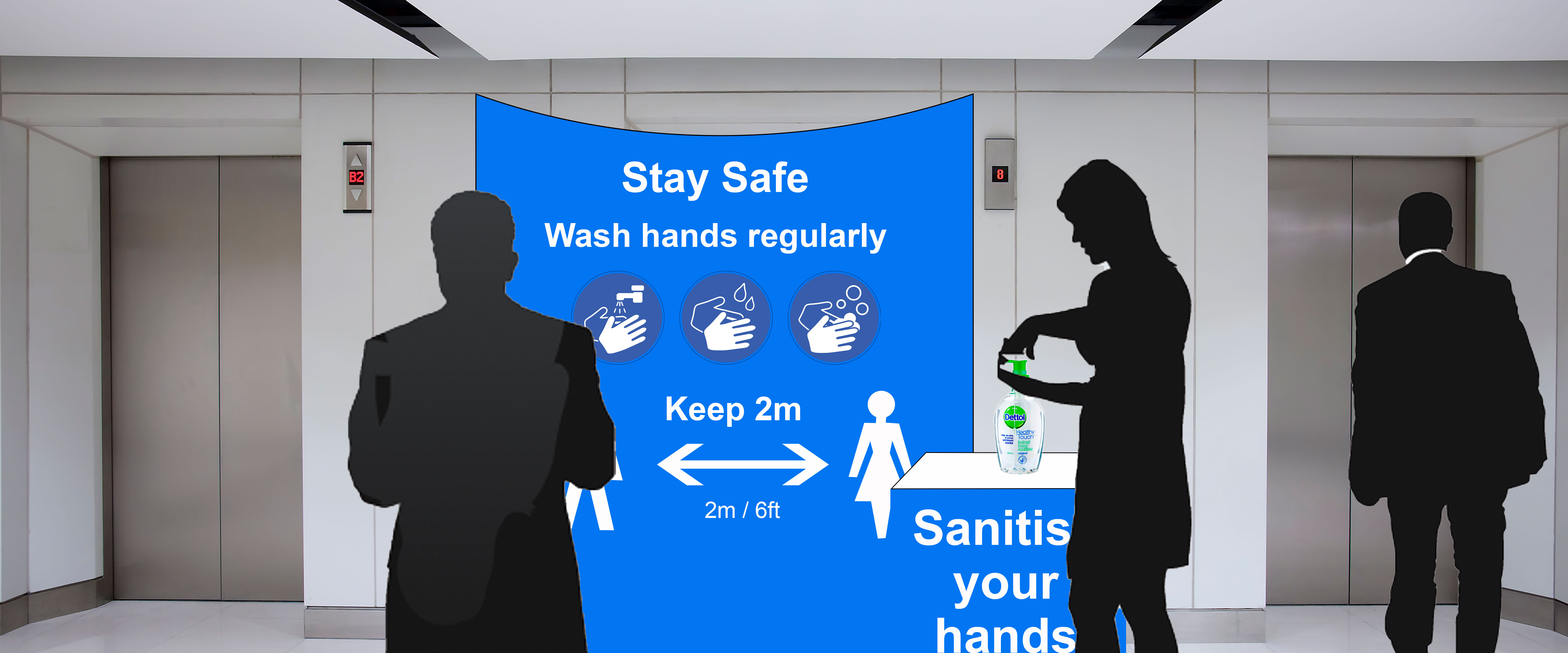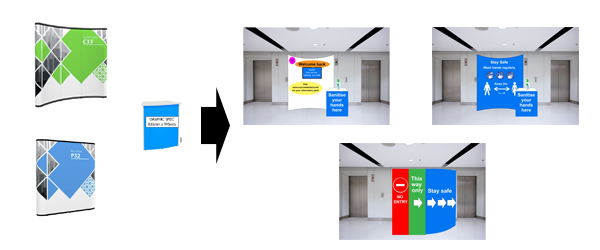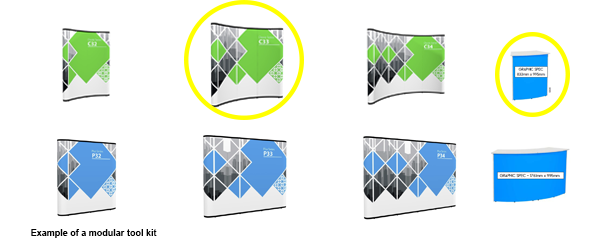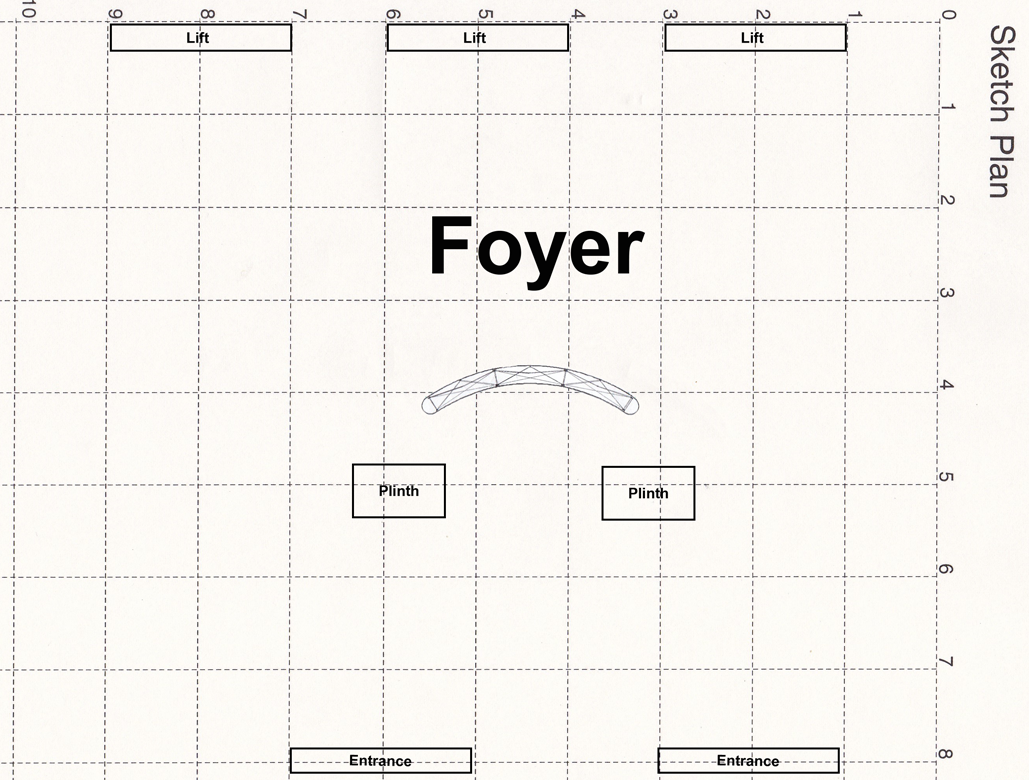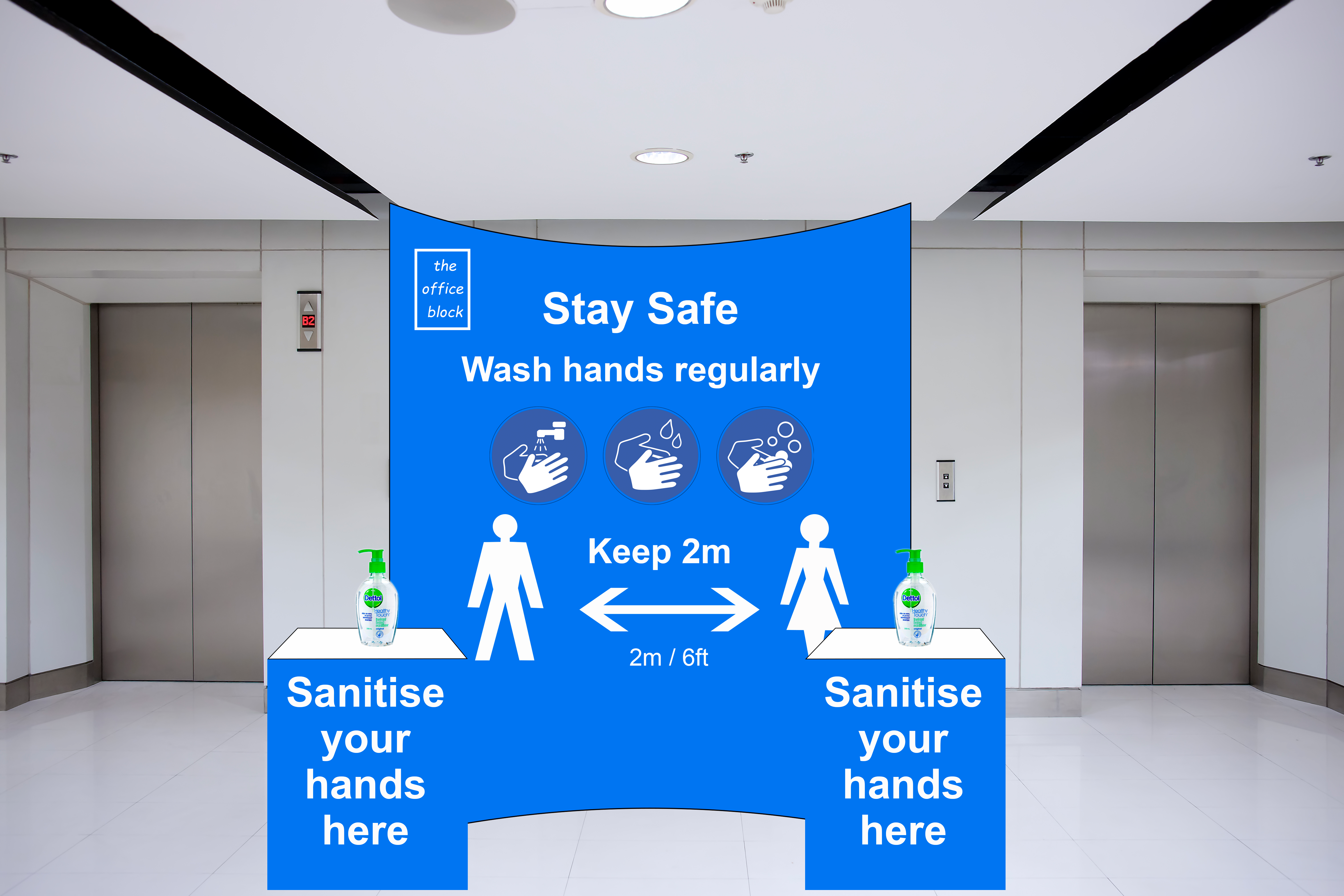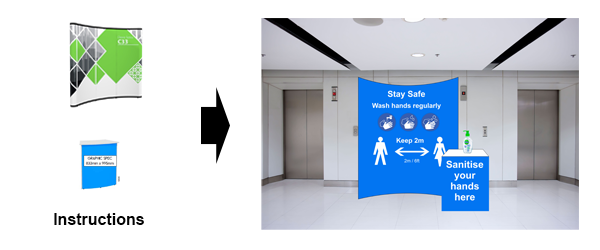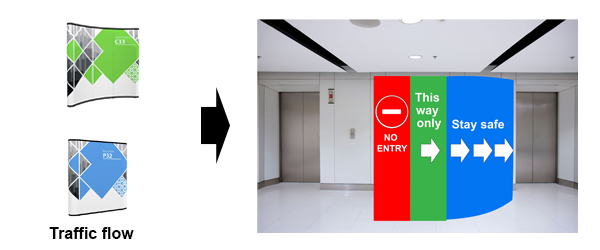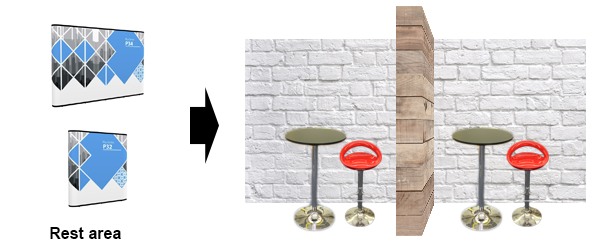Using modular bespoke display stands to create a covid safe working environment
Contents |
[edit] Getting people back to business
As businesses attempt to open up again after the coronavirus lockdown they are facing at least two key challenges:
- Providing a Covid-19 safe environment for people to operate in be that work, leisure, retail, health, education
- Persuading people that the environment is safe for them to visit
Providing a safe environment for people to operate in is likely to be an evolutionary process depending on how the Covid-19 pandemic develops and the subsequent guidelines issued by the Government to industry. At the time of writing this article the government guidance for a Covid-19 safe operating environment centres around two key areas:
- Increased hygiene - Higher frequency of hand washing and cleaning surfaces
- Minimising social interaction - Social distancing (2 metres at time of writing), facility layouts, shift patterns, traffic flow
Persuading people to go back into 'working' environments is as much about perception as it is reality. People need to be:
- Re-assured they will be safe
- Informed of how they need to act to stay and keep others safe
- Guided around the facility in a way that will keep them safe
The delivery of a Covid-19 safe environment for workers, customers or visitors to a facility will, in part, require temporary structures to re-assure, inform and guide people. Each building may have differing requirements and it is likely the structures and messages will change over time, as the Covid-19 pandemic evolves and Government guidelines change.
[edit] Using modular bespoke displays
Pop-up modular stands can provide a solution that helps promote safe behaviour of visitors to a facility and can be easily set-up, re-messaged and re-configured as the situation requires.
Modular displays are created by selecting a suitable combination of modular frames to fit a required space and structure. Bespoke graphics and accessories are then added to convey a message and illicit a desired reaction from the intended audience.
Example: The two pop-up frames and plinth on the left below can be used to create the three displays below on the right.
[edit] Stages of development
[edit] Briefing
A brief is developed between a client and a display provider, such as W7 Marketing Communications. The purpose of the brief is to make sure the display provider understands:
- What the purpose of the stand is
- What the physical/spatial requirements are
- What mandatory branding/messaging is required
An example of a brief might be:
- Purpose - To provide a sanitising station and display that will encourage people entering the building to sanitise their hands and inform them that they should observe social distancing and good hand hygiene whilst on site
- Spatial requirements - To be positioned inside the doors of the main foyer which is 10m wide by 8m deep with a 3m height restriction. Not obstructing the doors or the lifts
- Branding 'The Office Block' should appear within a design which reflects NHS type colours to help recognition and credibility of a medical type of message
[edit] Layout plan
At this stage the display provider would look at the space constraints and the suite of modular structures they have in their toolkit. Then pick a combination that they think will provide a suitable structure to deliver the purpose of the brief within the spatial requirements of the brief.
Example of the type of modular options and a possible selection for example brief above.
A scaled plan drawing will then be produced to check the structure will fit appropriately in the required space.
This is how it would look for the foyer example.
[edit] Concept design
The concept design is produced by the stand supplier and is a rough visual representation of the proposed structure and graphics of the stand. The purpose is for the stakeholders to discuss and agree before final specification, artwork and production.
In the foyer example, a concept design could look something like this:
[edit] Artwork and production
Once the final concept design is agreed, it can be used as a visual brief to a graphic designer to produce the artwork that will be required by the stand supplier to produce the graphic panels. The stand supplier will supply a template for the graphic designer to make sure the final artwork fits the print space correctly.
[edit] Delivery and set up
Modular pop-up stands come in hard cases that can be easily transported and man-handled. The stands themselves are easily set up by anyone, so having additional visitors to a site for set-up is optional.
[edit] Covid-19 display ideas
Ideas for how modular bespoke pop-up display stands could be used to help create a safe 'working' environment
[edit] Welcome station
When people return to a working environment, they will need to be re-assured that the host is doing everything they can to keep everyone safe. A welcome station near the entrance can provide physical re-assurance with a hand sanitising station and convey messages via a video screen and graphics on what else the host is doing and, what is expected of the visitor. A web address highlighted on the display could take the visitor to an information site they could access on their phone or laptop.
[edit] Instructions/Sanitising station
Visitors to a working facility operating under Covid-19 safe guidelines will need to be reminded of the procedures they need to follow to stay safe. Displays placed around the building re-enforcing these messages can help keep safe procedures top of mind and encourage best practice behaviour.
The displays and messages can be easily moved around to avoid fatigue.
[edit] Controlling traffic flow
Controlling people traffic flows around a building will be a key part of helping maintain social distancing during the Covid-19 pandemic. Modular display stands can be used graphically and physically to inform and control traffic flows.
[edit] Temporary rest areas
Pop-up modular displays can be configured to create a number of temporary environments that help provide a Covid-19 safe environment to site visitors. The structures can be used to give individuals a safe place to rest and eat their food, and the graphics can be designed to provide a pleasant environment.
[edit] How to get started
- Articulate your requirements in some form of written brief
- Talk through the brief with a pop-up modular stand supplier like W7 Marketing Communications
For further information visit W7 Marketing Communications or contact Simon Baxter
[edit] Resources
- GOV.UK - Working safely during coronavirus
- HSE - Working safely during the coronavirus (COVID-19) outbreak
--Simon Baxter 09:50, 17 Jun 2020 (BST)
Featured articles and news
One of the most impressive Victorian architects. Book review.
RTPI leader to become new CIOB Chief Executive Officer
Dr Victoria Hills MRTPI, FICE to take over after Caroline Gumble’s departure.
Social and affordable housing, a long term plan for delivery
The “Delivering a Decade of Renewal for Social and Affordable Housing” strategy sets out future path.
A change to adoptive architecture
Effects of global weather warming on architectural detailing, material choice and human interaction.
The proposed publicly owned and backed subsidiary of Homes England, to facilitate new homes.
How big is the problem and what can we do to mitigate the effects?
Overheating guidance and tools for building designers
A number of cool guides to help with the heat.
The UK's Modern Industrial Strategy: A 10 year plan
Previous consultation criticism, current key elements and general support with some persisting reservations.
Building Safety Regulator reforms
New roles, new staff and a new fast track service pave the way for a single construction regulator.
Architectural Technologist CPDs and Communications
CIAT CPD… and how you can do it!
Cooling centres and cool spaces
Managing extreme heat in cities by directing the public to places for heat stress relief and water sources.
Winter gardens: A brief history and warm variations
Extending the season with glass in different forms and terms.
Restoring Great Yarmouth's Winter Gardens
Transforming one of the least sustainable constructions imaginable.
Construction Skills Mission Board launch sector drive
Newly formed government and industry collaboration set strategy for recruiting an additional 100,000 construction workers a year.
New Architects Code comes into effect in September 2025
ARB Architects Code of Conduct and Practice available with ongoing consultation regarding guidance.
Welsh Skills Body (Medr) launches ambitious plan
The new skills body brings together funding and regulation of tertiary education and research for the devolved nation.
Paul Gandy FCIOB announced as next CIOB President
Former Tilbury Douglas CEO takes helm.







